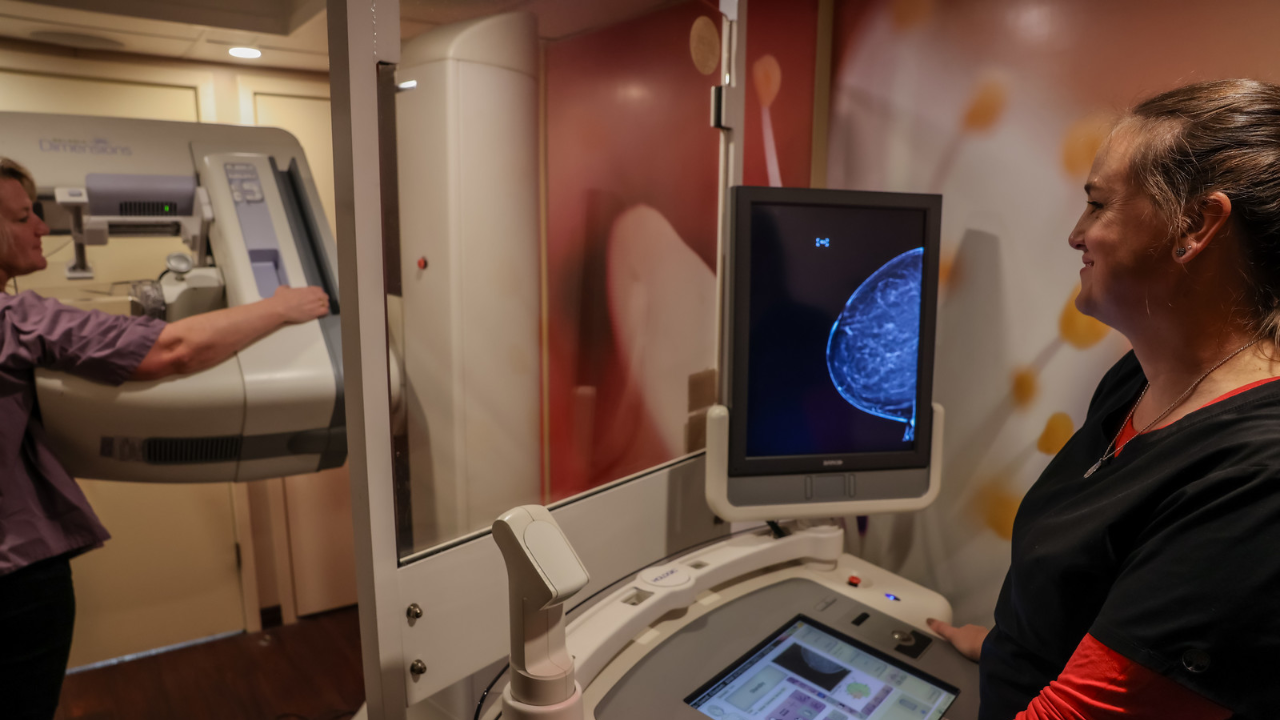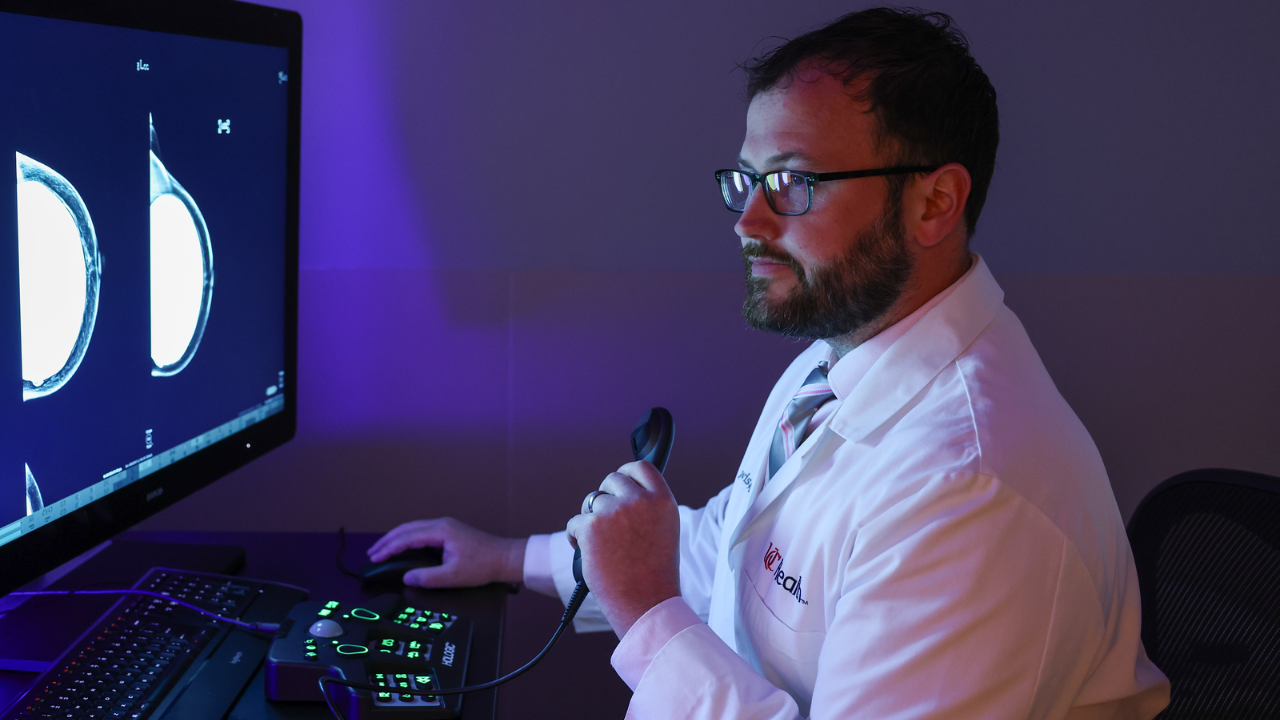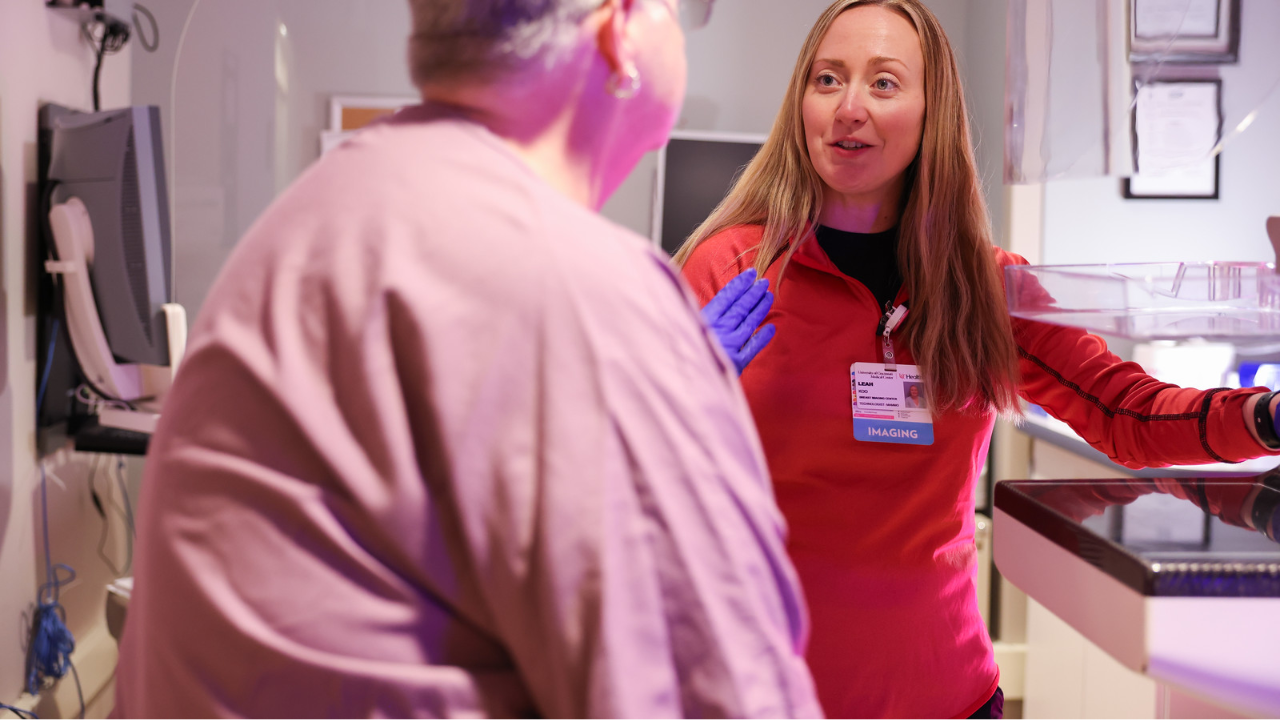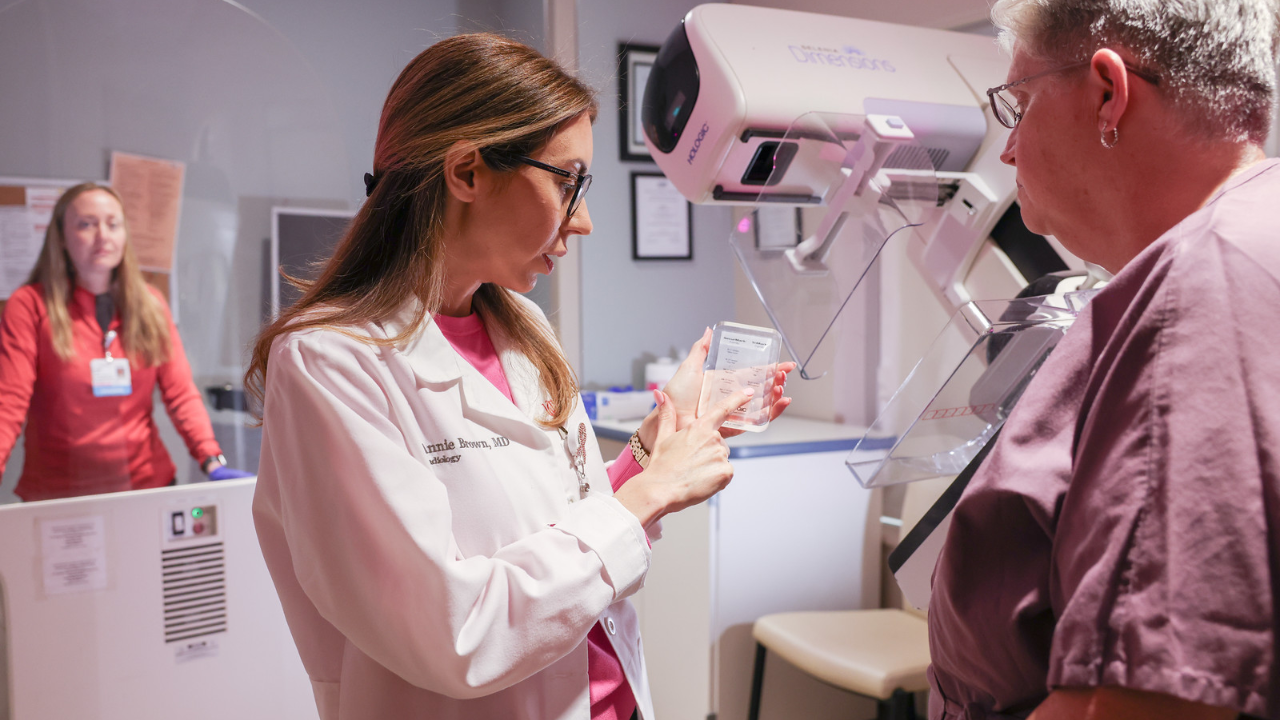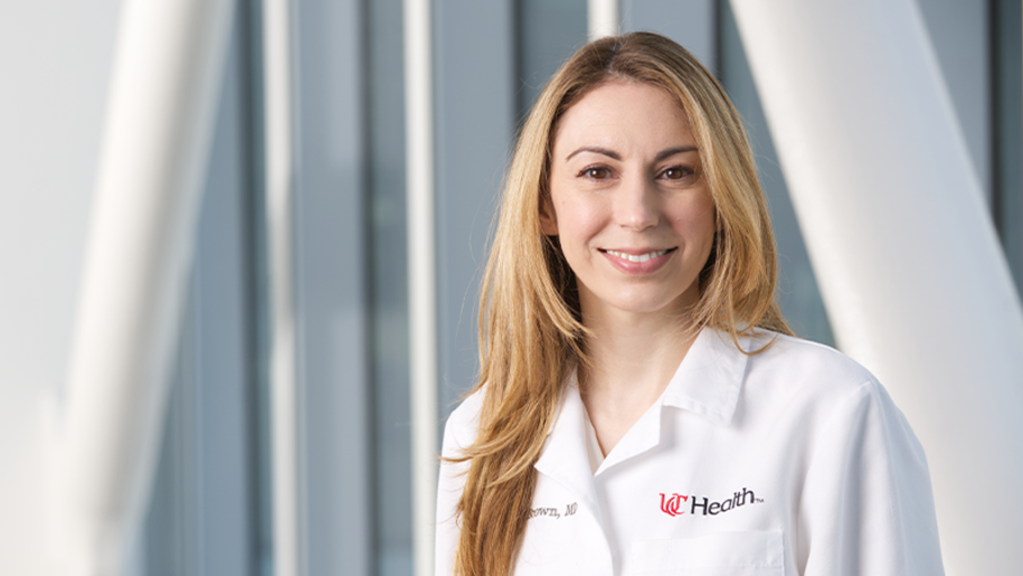Planning for a Mammogram
Discussing Your Breast Health
Taking ownership of your breast health starts with a conversation with your primary care provider and having a risk assessment by your 30th birthday.
Annie Brown, MD, FSBI, Section Chief of Breast Imaging and Associate Professor of Radiology, recommends that when discussing your breast health, it is important to detail any personal or family history of cancers, especially breast/ovarian cancer, or if you have had any breast implants or surgery. This information is helpful to see if you qualify for a screening mammogram sooner, or even supplemental screening with additional studies, such as an MRI or breast ultrasound.
Why Choose a 3D Mammogram?
Breast tomosynthesis, or a 3D mammogram, is the most preferred type of mammogram, as it allows doctors to see breast tissue more clearly and detect more cancers than a standard 2D mammogram.
Because 3D mammograms take multiple images of the breast, the radiologist, who is the physician interpreting your mammogram images, can view the breast like flipping through the pages of a book. A 2D mammogram is a single picture, like a closed book, where all the pages overlap, making it difficult to see some breast tissue.
Dr. Brown explains: “3D mammography is proven to help us find more breast cancers at earlier stages. It also decreases the number of women called back for additional imaging, which means fewer false alarms.”
At UC Health, only 3D mammograms are offered, helping ensure your screening is as clear and accurate as possible.
How Does Insurance Coverage Work for a Screening Mammogram?
In September 2010, the Affordable Care Act required Medicare, Medicaid and all health insurance plans to cover the cost of an annual screening mammogram for women over 40 with no copay or deductible.
At UC Health, women over 30 do not need a physician order to schedule an appointment.
Scheduling Your Mammogram
There is no specific time of the year after you turn 40 to schedule your mammogram—just schedule it when you’re ready. On or around your menstrual cycle, the breasts can be tender and more sensitive to compression, so women may want to avoid scheduling a mammogram during that time.
How Long Does a Mammogram Take?
A screening mammogram will take 15 minutes to take the pictures, but patients should anticipate being at the appointment for approximately 30 minutes. If a patient has prior mammograms at another hospital or breast center, it’s important to receive those for comparison, as this will help in getting the most accurate results.
How Will I Get My Mammogram Results?
Patients can receive results three ways—in the mail, electronically through MyChart or from their primary care provider.
At UC Health, all breast imaging is read by breast imaging experts—our fellowship-trained breast radiologists only do breast imaging. These physicians have completed additional training to subspecialize in breast imaging and intervention, which is shown in our breast imaging center’s many national accreditations, recognizing us as a center of excellence.
